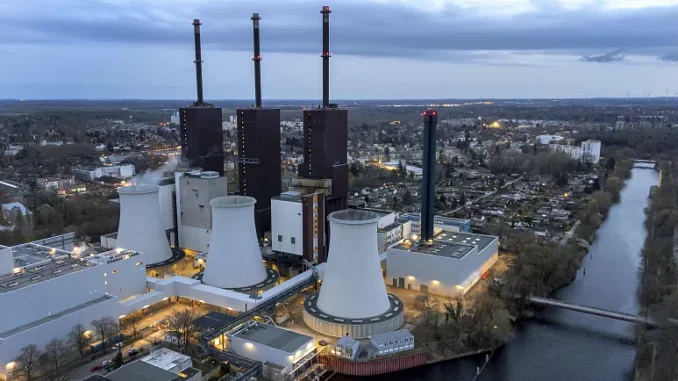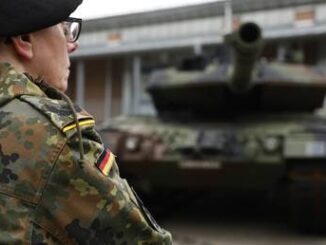
Europe’s energy crisis continues to impact consumers as the volatile oil and gas markets remain under pressure from current conflicts and a weak global economy.
Whilst crude produced some price swings, it has been, of late, the natural gas prices that have absorbed most of the impact as a result of the conflict in the Middle East.
Natural gas prices were 15% higher in October. At one point, they rallied by 40% to touch an eight month high – and given the geopolitical conflict is happening against the backdrop of a slowing economy, it is imperative to ask what will be the direction of gas markets moving forward, especially in Europe?
In case of a full blown war, as estimated by Bloomberg Economics, we can see the global economy tipping into a recession wiping off $1 trillion and oil prices touching $150. Naturally this would cause gas markets to skyrocket as well. In fact, even more.
However, the following analysis assumes that the war is either confined or no further escalation occurs. Additionally, that gas inventories remain intact.
Winter weather could alter gas price trajectory
Firstly, if we look at European gas inventories, they are 96% full. European inventories are +172 terawatt-hours (TWh) above the ten year seasonal average. If we look at history, the largest withdrawal was -782 TWh, and given that the occurrence of another large withdrawal isn’t expected, the outlook for Europe in terms of gas availability, remains positive.
This can indeed change depending upon the winter weather in Europe. In the shorter term, Europe is expected to enjoy “warmer than average” temperatures moving into November. Due to the prolonged El Niño running well into February 2024, it could create major shifts in the weather.
Moreover, there is a chance that 2024 will be the hottest year on record. However, it is difficult to exactly gauge the impact of El Niño on European weather except for one thing: that it can shift climate to either extremes.
Eurozone economy could slow natural gas demand
Another reason that gas prices might not stay in the bullish territory for long is due to the slowdown in the global economy, and especially the eurozone economy.
The recent HCOB’s Eurozone Manufacturing PMI came out at 43 (a three month low). S&P Global HCOB’s flash eurozone Composite Purchasing Managers’ Index (PMI), put together by S&P Global and recognised as a reliable indicator of economic well-being, dropped to 46.5 in October, down from 47.2 in September, marking its lowest point since November 2020.
In Germany, the largest economy in Europe, business activity has contracted for the fourth month in a row, with both manufacturing and service sectors showing a decline as per the latest PMI figures.
France, the eurozone’s second-biggest economy, also reported a contraction in business activity for October, albeit with a marginal improvement from September’s near three-year low.
Across the Channel, the United Kingdom, no longer a member of the EU, saw a decrease in business activity this month, raising alarms about a potential recession ahead of the Bank of England’s forthcoming interest rate decision.
This can also be corroborated by the fact that Europe’s liquified natural gas (LNG) imports have registered a significant drop in gas demand across various sectors in Germany. In the first half of the year, industrial gas usage decreased by 54 TWh, with no indication of an upturn.
Residential consumption also fell by 37 TWh, and the power sector’s gas usage dipped by 4.4 TWh. Collectively, this represents a decrease of 9.8 billion cubic meters, marking a 13% fall in Germany’s gas consumption for the entirety of 2022 within just a six-month period.
Europe’s gas price outlook for the rest of 2023
Should this trend continue, Europe’s largest gas market is projected to contract by over one-fourth by year-end. A similar trend is observed in other major European gas consumers such as Italy, the Netherlands, and France.
Hedge funds have sold an equivalent of 125 bcf of gas futures in the last week and at the time of writing, natural gas prices have come down a further 3% in the wake of a slowdown in demand.
However, moving forward, we can expect a slight jump in consumption as indicated by the 1% increase in October (the first year-over-year increase since the Russia-Ukraine war began). As such, the market will remain prone to supply shocks, or rather a perceived threat of it.
Moreover, the European energy markets are poised to experience strong swings in the coming days as geopolitical uncertainty keeps the observers, traders and analysts on their toes.
However, these indicators are helpful evidence in establishing the point that if the current conflict remains confined, or does not undergo further escalation, then the gas markets will follow a similar trend to that of oil markets as hedge funds and money managers continue to be net sellers selling equivalent of 57 million barrels over the week ending November 7 – a correction is due.
What this means for people in Europe
For the average consumer and household, this spells more uncertainty. As the markets become prone to swings and volatility it impacts consumer budgets as planning goes out of the window.
Moreover, if energy prices continue to stay on the bullish end, then inflation, which finally seems to be coming down, will become sticky, adversely impacting the spending power that can subsequently put downward pressure on the retail sector, which is already in doldrums. As per Eurostat, there has been a 2.9% decline in retail sales on a year-over-year (YoY) basis.
Strategic hedging and careful planning is advisable for those who own and run businesses. It will get bumpy moving forwards.
ENB Top News
ENB
Energy Dashboard
ENB Podcast
ENB Substack



